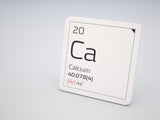The Scoop on Canine Hip Dysplasia
Your previously energetic and bouncy dog no longer wants to go up or down the stairs. Or, maybe she looks weird when she walks and even stranger when she runs, bunny-hopping along instead of sprinting like she used to. Perhaps you’ve noticed a definite ‘click’ when your boy walks past. Symptoms like these may send you off to the vet -- and indeed, sometimes hip dysplasia is only discovered during an examination or after X-rays have been taken.
Canine Hip Dysplasia (CHD) can affect any dog, though the larger breeds tend to be more susceptible. Leading the way, as most likely to suffer from CHD, are breeds like Newfoundland dogs and Saint Bernards, German Shepherds, and Golden Retrievers.
What is CHD?
Dysplasia refers to a malformed joint. Though most of us are familiar with hip dysplasia, elbow dysplasia can also be a problem. The actual underlying joint issue may vary from case to case. There may be a mismatch in size between the rounded femoral head and the hip socket or the shape of the femoral head may not be right, which means the bone doesn’t move smoothly in the joint.
What Causes CHD?
CHD is a genetic condition, which is why it tends to run in dog families. Several genes are involved and they must interact in a very specific way for the dog to develop dysplasia. Because a dog may carry genes but not develop CHD, it’s impossible to rule out entirely that a particular breeder will never produce a puppy with the condition. That said, environmental factors can influence when symptoms first appear and how bad things get. An overweight dog or poor nutrition can make things worse, as can too much hard exercise, particularly in young dogs who are still growing.
How Can You Avoid CHD?
First, if you are buying a purebred puppy, investigate the breeder. Certainly parents exhibiting symptoms are a huge red flag, but so is a breeder that claims CHD is caused only by environmental factors. The only way to know for sure if a dog has CHD is to have an X-ray. Dogs with mild dysplasia often show no symptoms and a physical examination is not enough to make a definitive diagnosis.
What Else Can You Do?
Perhaps the single biggest contributing environmental factor is excess weight, and that’s something you can control. Watch your puppy’s rate of weight gain and keep adjusting the amount of food eaten to keep your youngster on the lean side rather than on the roly-poly side. Likewise, exercise should be balanced so your puppy is fit but not over-stressing growing bones and joints.
Feed a Quality Diet
Feeding a top quality diet is essential so your dog receives not just enough nutrients, but the correct balance of nutritional elements. It may be tempting to go wild with supplements, but more is not necessarily better. If you are feeding a complete and balanced food like Rawmate, there should be little need for supplementation. Consult with your vet before doing something like adding calcium, which can completely throw off the ideal calcium-phosphorous balance and actually create more problems than it solves.
What if My Dog Has CHD?
Severe CHD can be debilitating, but many, many dogs have only mild or moderate dysplasia and can live long, happy, active lives. Because the joint is malformed, though, things won’t wear properly and this can lead to an earlier-than-normal onset of arthritis. Again, a good diet, maintaining appropriate body weight, and making sure your dog stays fit will all help alleviate symptoms and keep your pup in fine shape for as long as possible. In the most severe cases, there are surgical options, including hip replacements, that can have excellent outcomes.
For more information about optimising your dog’s diet, visit the Rawmate website.







There are 0 Comments